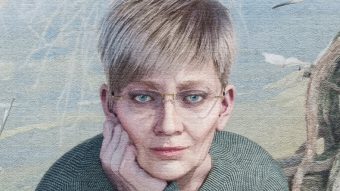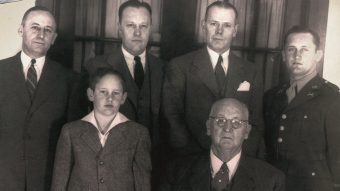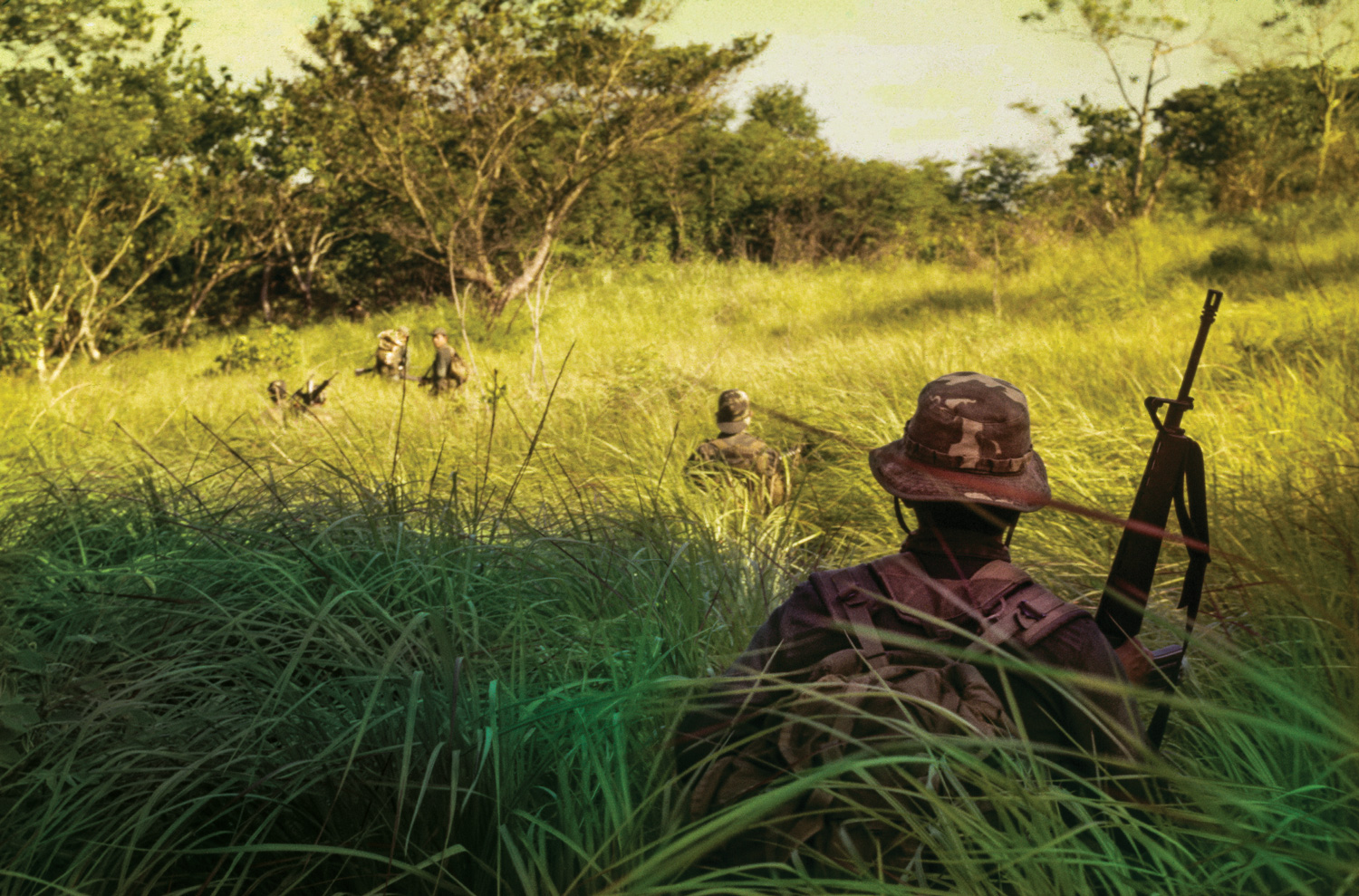
The wipers slapped across the rain-smeared windshield as we sped through downtown San Salvador. Nelson Ayala clutched the steering wheel to keep us on the road in the torrential downpour. It was already two hours past dark, and it felt way too late to be out on the desolate streets in this part of town.
Suddenly, a body appeared in the headlights just ahead of us, sprawled on the pavement. Ayala swerved to avoid it and kept going. “Shouldn’t we stop to help?” I asked. “It’s not convenient,” he replied, wagging a finger. “You don’t know who that person might be or why he is there. We’ll call an ambulance from the house.”
It was June 16, 1983, my first day in El Salvador, my first day as a professional reporter. I’d arrived that afternoon, a month after graduating with a master’s degree from the Missouri School of Journalism. I’d made a beeline from the airport to the Camino Real Hotel, headquarters for the foreign press agencies covering the civil war. After meeting with CBS executives who had visited Mizzou that spring, I had managed to secure credentials and radio gear from the company. I would be CBS’s “stringer,” or freelance reporter, in the war-ravaged country. I only had $50 to my name.
Ayala, the CBS driver whom I met in the network’s bureau, had offered to put me up until I could scrape together the funds to find a place of my own. He steered the Land Cruiser through a wrought-iron gate and into his garage, just down the street from the body. He made the call from upstairs and flipped off the lights. Twenty minutes later, we watched from the window as an ambulance silently approached, its red strobe flashing in the rain. Two silhouetted figures hopped out, bundled the body into the vehicle and drove off. “You have to be careful,” Ayala admonished with another wag of the finger. “That person is dead for a reason. You stay away from dead people if you don’t want to end up dead yourself.”
This was my first lesson in how to survive in a war zone. For myself and a generation of young journalists arriving in Central America in the early 1980s, the armed conflicts in El Salvador and Nicaragua — and to a lesser extent Guatemala — were to become the crucible where we learned our trade and forged our careers. The Cold War was still on, and the Reagan administration saw the revolutions then sweeping the isthmus as evidence the Soviet Union was trying to establish a “communist beachhead” in our backyard. The resulting policies and escalating conflicts made the region one of the decade’s dominant international stories.
I would end up staying in Central America for seven years, living in all three countries, reporting on the conflicts from the towns, hamlets and frontlines of each. I covered the U.S. invasion of Panama and the capture of strongman Manuel Noriega as the 1980s came to an end. But with the collapse of the Berlin Wall and the end of the Cold War, the wars in Central America were winding down, too. In early 1990, I decided to pack up and leave.
Many of my colleagues would move on to other war zones in the Middle East and Bosnia. But I turned my attention to a different sort of conflict taking shape — the resource-hungry global economy’s advance along remote wilderness frontiers in places like the Amazon rainforest, the Alaskan Arctic, the jungles of Southeast Asia. These were regions of shaky governance, often overlapping with the homelands of traditional, subsistence-oriented communities and age-old indigenous cultures. Increasingly, these populations found themselves up against a bewildering array of much more powerful, profit-hungry players: oil companies, mining interests, timber barons. This would become my new beat.

But no matter where I traveled to report on this panorama, the experiences from those formative years proved invaluable to my work and sometimes to my survival. The 30th anniversary of my departure from Central America seems an opportune moment to look back on those experiences and take measure of the lessons I learned there.
By mid-1983, the war had shifted away from the capital, where the military and shadowy death squads had “disappeared” thousands of suspected enemies or had slaughtered them outright. Most of the remaining opposition had taken up arms and retreated into the mountains to form a rebel army called the Farabundo Martí National Liberation Front, or FMLN. By the time I arrived in El Salvador, the FMLN was staging frequent and punishing attacks on government garrisons and pro-government towns across wide swaths of the country.
The U.S. was just beginning to implement a Vietnam-style counterinsurgency campaign in the countryside. Special Forces advisers were training the army in aggressive search-and-destroy tactics while they oversaw a parallel “hearts and minds” civic action program to undercut civilian support for the FMLN. Ground zero for this new plan was San Vicente Province, a two-hour drive east of San Salvador.
When Time magazine photographer Robert Nickelsberg invited me to join him on a day trip to San Vicente, I leapt at the chance. I was eager to get out in the field with a more experienced journalist and escape the oppressive atmosphere of San Salvador, where reporters spent their days running from one press conference and embassy briefing to another.

By midday, Nickelsberg and I veered off the Pan-American Highway and entered a world of startling beauty. A quilt work of freshly plowed fields stretched away into the distance, flanked by high walls of sugarcane. Coffee groves nestled in the shade of leafy trees. We wound our way along the lush slopes of San Vicente volcano. The dirt road gave way to paving stones, and we entered the village of Verapaz. At first glance, Verapaz appeared to be a tableau of rustic charm: the cobblestone streets, white-washed, colonial-style buildings and homes painted in pastel hues, topped with roofs of orange tile. Then I took a closer look at the walls. They were riddled with constellations of bullet holes.
A pair of grizzled men in straw hats stepped from a stone bunker and drew their weapons. Nickelsberg stepped on the brakes. “Civil defense,” he said. “Dangerous guys. Don’t make any fast moves.” The civil defense had the unenviable task of fending off guerrilla attacks on frontline towns long enough for reinforcements to arrive. They were staunch anti-communists, deeply suspicious of outsiders, known to shoot first and ask questions later. Their battered carbines looked like relics from another century, but that didn’t make them any less lethal, especially at point-blank range. We cranked down the windows and handed over our government-issued press credentials.

“Buenas tardes!” I said cheerily. One of them snatched the letter from my hand. His steely eyes studied me without the slightest trace of mirth. “Take off your sunglasses,” Nickelsberg told me under his breath. The men scrutinized our papers: the mugshots, the seal of the Salvadoran army’s high command. They finally allowed us to pass, but not before Nickelsberg’s instructions soaked in. Show respect to everyone. Never give strangers, especially armed strangers, a reason to doubt who you say you are. Let them see your eyes.
Eventually I earned enough money to get my own apartment in San Salvador. Just as important, CBS fronted me the money to buy a secondhand car. Mobility, I’d begun to learn, was key to covering the war the way I wanted to cover it — out along the backroads and in the backwoods, where few other journalists explored on a regular basis. As a freelancer, I enjoyed greater latitude than staff reporters more tethered to the daily news agenda in the capital, and I took advantage of it in my 1977 Mitsubishi Colt Lancer.
Within a few months of arriving in-country, I was also filing feature stories and photographs for the Atlanta Journal-Constitution and other publications. Working for print and broadcast, I evolved a somewhat eclectic reporting style. At times, the camera would come out first if I wanted to capture a fleeting moment before it passed. I found it could also help engage strangers when my notebook and pen might seem more threatening. An offer to hand out Polaroid photos — another trick I learned from Nickelsberg — invariably worked wonders. If a voice resonated with emotion that would make for powerful radio, out came the microphone and I’d roll tape as well.
Sometimes alone, sometimes in the company of other journalists, I learned the ropes. I learned where I was likely to find one side or the other along the rapidly shifting battle lines. I came to know which hamlets were ruled by jack-booted paramilitaries, which were held by the guerrillas and which ones lived in a kind of perpetual twilight zone — where neither the government nor the rebels had the strength to maintain a permanent presence. I gained a sense of when it was safe to venture down one road, when an ambush might lie in wait down another. I developed an ear for when someone was telling the truth and when someone was telling me what he or she thought I — or others present — wanted to hear.

A huge topographic map of El Salvador, 1:100,000 scale, stretched across an entire wall at the CBS office in the Camino Real. Every bureau on the second floor had one, with squiggly blue lines and brown and green contours suggesting steep ravines and meandering brooks. There were countless villages with exotic names like Yamabál, Meanguera, El Zapotal. Places where I knew I’d find the war in all its living color. No other country in Central America made maps of such detail available to civilians. They came in six separate sheets, and we began to carry them on forays into the countryside, a crucial guide to the war zones. Even so, we had to keep them under wraps. Getting caught with them at a roadblock of either side was bound to arouse suspicion.
One afternoon, driving alone in brilliant sunlight, I turned off onto a backroad toward the mountain-ringed village of Anamorós in far-eastern El Salvador. The rebels had overwhelmed the army garrison there days before, and I expected to run into them somewhere up ahead. After consulting the map at the turnoff, I tossed it on the backseat and forgot it there, until a half-hour later when I rounded a bend and saw a dozen or so armed men blocking the road. No chance to turn back, too late to reach around and rein in the map.
The men were dressed in black, with no insignias or shoulder patches, and they were waving me to a halt. Some of them had beards, not standard army protocol. But I’d heard that some elite army units had begun to operate in such a fashion to confuse and intimidate peasants in the backcountry. These guys were irregulars, but something didn’t quite fit. They were too neatly outfitted, their uniforms too uniform. They had the air of government forces.

I saluted them through the windshield, presented my military press credentials. I preemptively grabbed the map, spread it over the hood of the car and said: “So, tell me, brothers, what’s going on in the zone?” It caught them off guard. “We’re on a sweep through here,” said their evident leader. “But what are you doing — looking for the terrorists?” I heard the subtext: Maybe you’re a guerrilla spy? It was no time for equivocation. “Not at all,” I replied with a touch of outrage. “My colonel Cruz told me the army had regained control of the area, so I’ve come to have a look.” Evoking the name of the regional commander turned out to be the perfect bluff. They let me go. But even as I trained my eye on the rearview mirror, I stuffed the maps under my seat and vowed never to get caught with them out in the open again.
Knowing who was who, or being able to figure it out in a split second, could save your life. Like the time a group of friends and I ran into a band of masked gunmen on a lonely road after dark in my final days in Central America.
In 1985, I moved to Nicaragua, where the war was heating up between the U.S.-backed Contra rebels and revolutionary Sandinista government they were trying to overthrow. In El Salvador, violence could break out anywhere, anytime. Nowhere was safe. But in Nicaragua, finding the war meant venturing deep into the countryside.
The long roads that twisted through the forested mountains of Nicaragua’s northern mountains and central highlands offered ideal perches for an ambush at nearly every turn. The Contras had made something of a sport of attacking not only Sandinista Popular Army convoys but civilian vehicles as well. The roadsides were littered with the burned-out hulks of East German transport trucks and Toyota 4x4s. The latter often carried government officials who armed themselves against such attacks, blurring the line between civilians and military targets.
I’d been up and down those spooky thoroughfares many times by April 1990. Some of those journeys were made in military convoys. But mostly I traveled with Newsweek photographer Bill Gentile in his International Harvester truck. We’d tape “TV” in block letters on the hood and windows and fly a large white flag — “like a Christmas tree,” Gentile would joke — in the hope that our conspicuousness would protect us. It was always a gamble.
The Contra War was at its end. Incumbent Sandinista President Daniel Ortega had been defeated at the polls in February, and he’d agreed to step down. The Contras were gathering in U.N.-supervised ceasefire zones, waiting to disarm. Gentile suggested a foray into the central highlands to report on the Contras’ disarmament. It would be our last hurrah. We were joined at the last moment by freelance photographer Jeff Perkell, a relative newcomer. Off we went, heading east out of Managua.
It was midafternoon by the time we pulled up into a clearing flanked by a few clapboard shacks. This was the hamlet of La Piñuela. Several Contras had gathered beneath a high barren tree, roasting a steer they’d requisitioned from a local farmer. Some used the cleaning rods from their AK-47s as barbecue skewers. Raw meat dried in long red ribbons from the tree limbs, imparting a disquieting air to the scene. We asked about the coming peace and what they planned to do when they returned to the dells and valleys from which they hailed. They seemed pleased the war was over but confused about their future prospects.
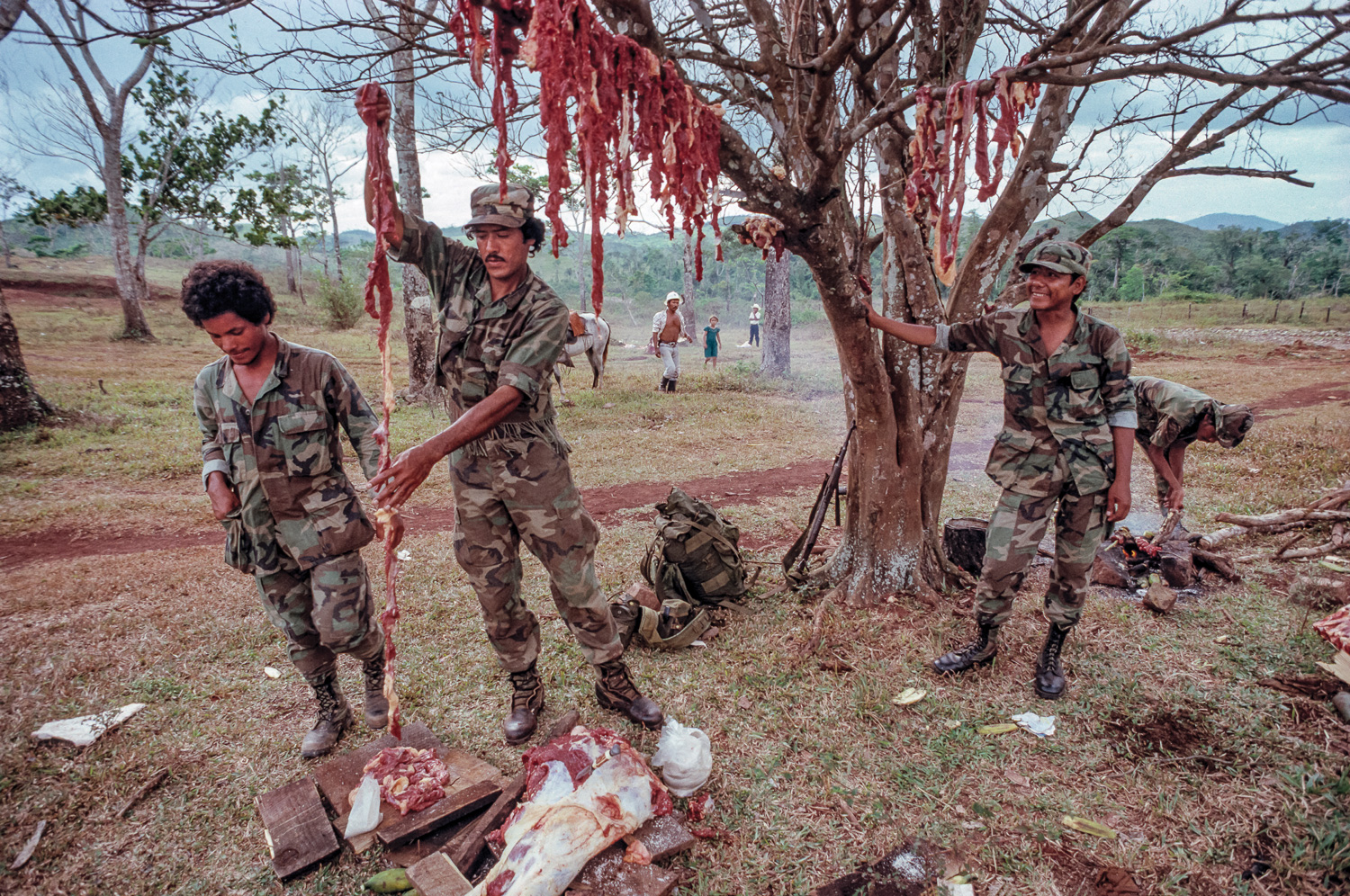
Dusk was gathering by the time we wrapped up. Under normal circumstances, we’d have stayed put for the night. But we’d been lulled into a sense of security by the ceasefire and hadn’t provisioned ourselves for an overnight trip. We bid farewell and pulled away.
We were rumbling along a rutted tire track about an hour later when I caught a glint of metal up ahead. A half-dozen masked men came into view, and they were pointing AK-47s directly into our windshield. It was immediately clear that something really bad might come to pass on this pitch-black road in the middle of nowhere.
Gentile doused the headlights. I reached overhead for the interior light and flicked it on. It was standard procedure when approaching armed men at night. Turn off your headlights, turn on the house lights. The men advanced, fingers on their triggers. Their faces were shrouded in red-and-black bandanas, the signature colors of the Sandinistas. But I’d been around a lot of Sandinista troops, and I couldn’t picture any of them moonlighting as highwaymen.
“They’re Contras,” I said. “They’ve got to be.” Gentile agreed. “Jeff, let Scott and I do the talking,” he said. They ordered us out of the truck. One of them yanked on the bill of my CBS News cap. “What’s this say?” he sneered. “Vote for Daniel?” Ortega’s campaign had distributed Vota por Daniel hats by the tens of thousands, and many of his supporters were still wearing them. “No,” I replied with all the indignation I could muster. I pointed to the letters on my cap. “Look. C-B-S. We’re American journalists. CBS is an American television network.”
“Yeah, but you guys support the Sandinistas,” the gunman challenged.
“We have nothing to do with the Sandinistas.” I spat out the words, as though I’d never endured a worse insult. “On the contrary, we’ve just come from interviewing los comandos.” The Contras liked to be called Commandos. The name carried mystique, a sense of higher purpose.
“Commandos?” The gunman’s voice brightened. “Do you carry orders from them?” Sadly, we did not. But seeing an opening, I pressed ahead. “Look, we’ve just come from La Piñuela. There are many commandos there. Their comandantes have made important declarations to us, and we’re in a rush to report them to the entire world!”
He eyed me suspiciously in the dim glow of the truck’s interior light. Damn, I thought, maybe I’d gone too far. Had he had smelled the BS through his bandana? I feared he was about to push me to my knees, the prelude to execution.
In the heart-thumping minutes that followed, we were stripped of cash and valuables. As I held my hands in the air, I felt a paw slide into my hip pocket and pry my wallet loose. I checked a powerful impulse to resist. Another set of hands jerked the watch from my wrist. “Por la causa,” the bandit said. “For the cause,” I agreed. His cause.
“Well, brothers,” Gentile spoke up. “We’ve given you what we can offer. We need to get going. What about it?”
An excruciating silence ensued. Finally, one of them said: “OK, you can proceed. Keep your inside lights on. Don’t look back. Just keep driving.” We climbed aboard. Gentile steered the truck forward into the night.
We pulled away in silence, each of us taking time to register what had just happened, how close we’d come to the end. Those men were part of a new breed of renegade on the postwar landscape; they answered to no one. But we would make it back to Managua. We would make it back to our friends, our girlfriends, our wives. We would see the sun come up tomorrow. I would be in Miami by Friday. And as our headlights fell upon the bend in the road up ahead, where we’d vanish forever from the sights of the guns still trained at our backs, I couldn’t wait to get there.
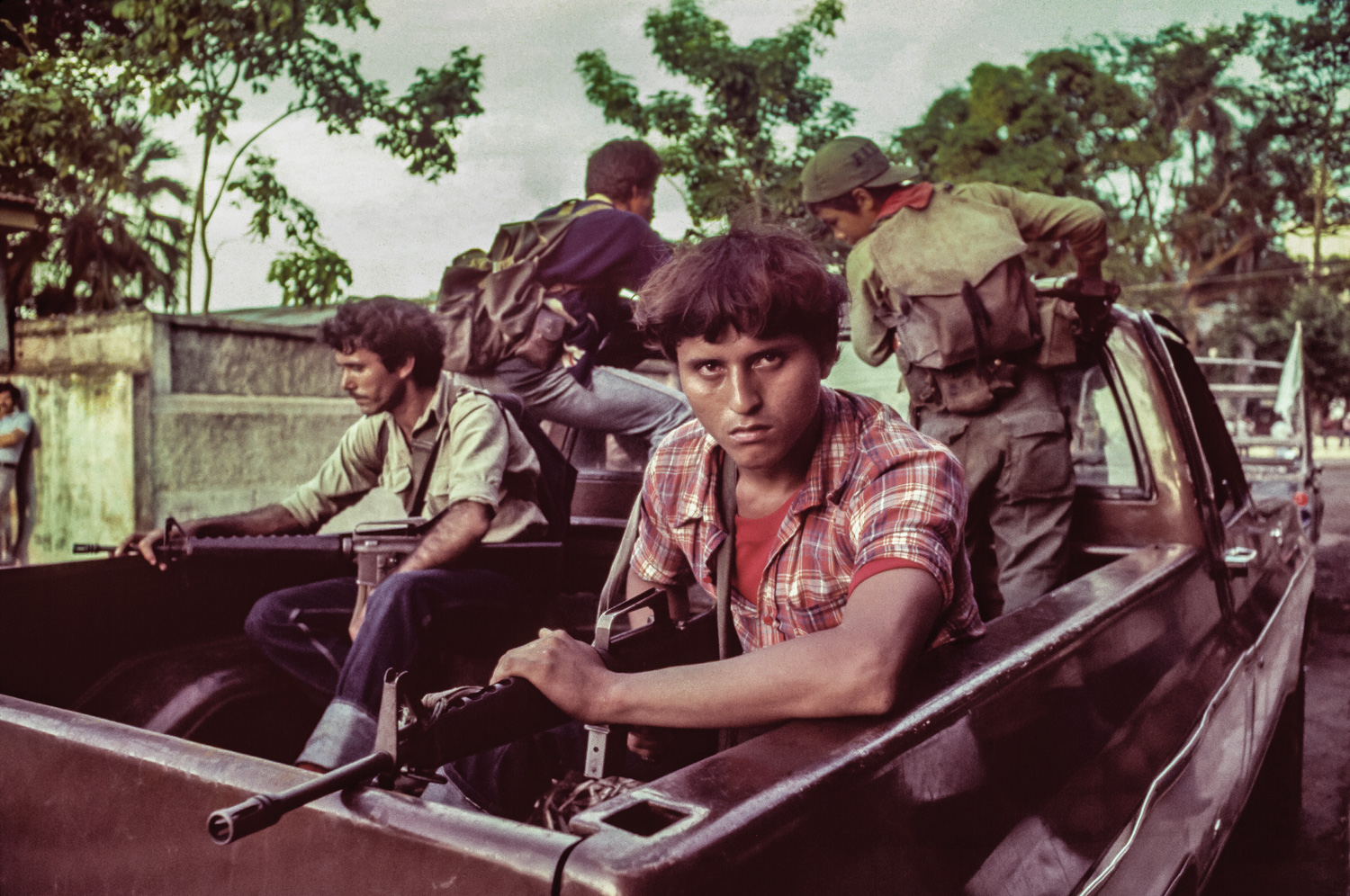
Scott Wallace, MA ’83, covered the wars in Central America for seven years in the 1980s for CBS News, the Atlanta Journal-Constitution, Newsweek and the Guardian. He is an associate professor of journalism at the University of Connecticut and author of the bestselling book, The Unconquered: In Search of the Amazon’s Last Uncontacted Tribes.
To read more articles like this, become a Mizzou Alumni Association member and receive MIZZOU magazine in your mailbox. Click here to join.


